TP53 drives invasion through expression of its Δ133p53β variant
- PMID: 27630122
- PMCID: PMC5067115
- DOI: 10.7554/eLife.14734
TP53 drives invasion through expression of its Δ133p53β variant
Erratum in
-
Correction: TP53 drives invasion through expression of its Δ133p53β variant.Elife. 2025 May 2;14:e107369. doi: 10.7554/eLife.107369. Elife. 2025. PMID: 40314231 Free PMC article.
Abstract
TP53 is conventionally thought to prevent cancer formation and progression to metastasis, while mutant TP53 has transforming activities. However, in the clinic, TP53 mutation status does not accurately predict cancer progression. Here we report, based on clinical analysis corroborated with experimental data, that the p53 isoform Δ133p53β promotes cancer cell invasion, regardless of TP53 mutation status. Δ133p53β increases risk of cancer recurrence and death in breast cancer patients. Furthermore Δ133p53β is critical to define invasiveness in a panel of breast and colon cell lines, expressing WT or mutant TP53. Endogenous mutant Δ133p53β depletion prevents invasiveness without affecting mutant full-length p53 protein expression. Mechanistically WT and mutant Δ133p53β induces EMT. Our findings provide explanations to 2 long-lasting and important clinical conundrums: how WT TP53 can promote cancer cell invasion and reciprocally why mutant TP53 gene does not systematically induce cancer progression.
Keywords: EMT; cancer biology; cancer invasion; human; p53 isoforms; survival.
Plain language summary
Most cancers are caused by a build-up of mutations that are acquired throughout life. One gene in particular, called TP53, is the most commonly mutated gene in many types of human cancers. This suggests that TP53 mutations play an important role in cancer development. It is widely considered that the TP53 gene normally stops tumors from forming, while mutant forms of the gene somehow promote cancer growth. Evidence from patients with cancer has shown, however, that the relationship between TP53 mutations and cancer is not that simple. Some very aggressive cancers that resist treatment and spread have a normal TP53 gene. Some cancers with a mutated gene do not spread and respond well to cancer treatments. Recent studies have shown that the normal TP53 gene produces many different versions of its protein, and that some of these naturally occurring forms are found more often in tumors that others. However, it was not clear if certain versions of TP53’s proteins contributed to the development of cancer. Now, Gadea, Arsic, Fernandes et al. show that Δ133p53β, one version of the protein produced by the TP53 gene in human cells, helps tumor cells to spread to other organs. Tests of 273 tumors taken from patients with breast cancer revealed that tumors with the Δ133p53β protein were more likely to spread. Patients with these Δ133p53β-containing tumors were also more likely to develop secondary tumors at other sites in the body and to die within five years. Next, a series of experiments showed that removing Δ133p53β from breast cancer cells grown in the laboratory made them less likely to invade, while adding it back had the opposite effect. The same thing happened in colon cancer cells grown in the laboratory. The experiments showed that Δ133p53β causes tumor cells with the normal TP53 gene or a mutated TP53 gene to spread to other organs. Together the new findings help explain why some aggressive cancers develop even with a normal version of the tumor-suppressing TP53 gene. They also help explain why not all cancers with a mutant version of the TP53 gene go on to spread. Future studies will be needed to determine whether drugs that prevent the production of the Δ133p53β protein can help to treat aggressive cancers.
Conflict of interest statement
The author declares that no competing interests exist.
Figures


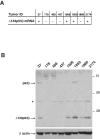

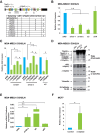

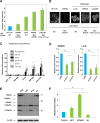
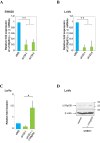
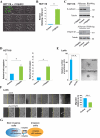

References
-
- Adorno M, Cordenonsi M, Montagner M, Dupont S, Wong C, Hann B, Solari A, Bobisse S, Rondina MB, Guzzardo V, Parenti AR, Rosato A, Bicciato S, Balmain A, Piccolo S. A Mutant-p53/Smad complex opposes p63 to empower TGFbeta-induced metastasis. Cell. 2009;137:87–98. doi: 10.1016/j.cell.2009.01.039. - DOI - PubMed
Publication types
MeSH terms
Substances
Grants and funding
LinkOut - more resources
Full Text Sources
Other Literature Sources
Medical
Research Materials
Miscellaneous

